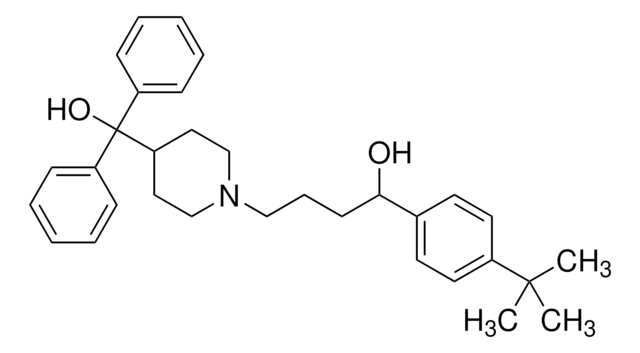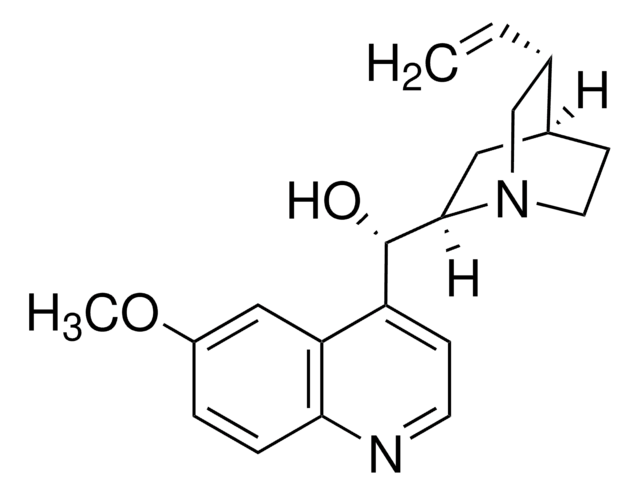Alle Fotos(3)
Wichtige Dokumente
A7205
3-Acetamidphenol
97%
Synonym(e):
3-Hydroxy-acetanilid
Anmeldenzur Ansicht organisationsspezifischer und vertraglich vereinbarter Preise
Alle Fotos(3)
About This Item
Lineare Formel:
CH3CONHC6H4OH
CAS-Nummer:
Molekulargewicht:
151.16
Beilstein:
907998
EG-Nummer:
MDL-Nummer:
UNSPSC-Code:
12352100
PubChem Substanz-ID:
NACRES:
NA.22
Form:
crystals
Assay:
97%
Empfohlene Produkte
Qualitätsniveau
Assay
97%
Form
crystals
mp (Schmelzpunkt)
145-148 °C (lit.)
SMILES String
CC(=O)Nc1cccc(O)c1
InChI
1S/C8H9NO2/c1-6(10)9-7-3-2-4-8(11)5-7/h2-5,11H,1H3,(H,9,10)
InChIKey
QLNWXBAGRTUKKI-UHFFFAOYSA-N
Suchen Sie nach ähnlichen Produkten? Aufrufen Leitfaden zum Produktvergleich
Verwandte Kategorien
Signalwort
Warning
H-Sätze
Gefahreneinstufungen
Eye Irrit. 2 - Skin Irrit. 2
Lagerklassenschlüssel
11 - Combustible Solids
WGK
WGK 2
Flammpunkt (°F)
Not applicable
Flammpunkt (°C)
Not applicable
Persönliche Schutzausrüstung
dust mask type N95 (US), Eyeshields, Gloves
Hier finden Sie alle aktuellen Versionen:
Besitzen Sie dieses Produkt bereits?
In der Dokumentenbibliothek finden Sie die Dokumentation zu den Produkten, die Sie kürzlich erworben haben.
Identification of hepatic protein targets of the reactive metabolites of the non-hepatotoxic regioisomer of acetaminophen, 3'-hydroxyacetanilide, in the mouse in vivo using two-dimensional gel electrophoresis and mass spectrometry.
Y Qiu et al.
Advances in experimental medicine and biology, 500, 663-673 (2002-01-05)
M A Bae et al.
Molecular pharmacology, 60(4), 847-856 (2001-09-20)
Acetaminophen (AAP), a widely used analgesic drug, can damage various organs when taken in large doses. In this study, we investigate whether AAP causes cell damage by altering the early signaling pathways associated with cell death and survival. AAP caused
M A Tirmenstein et al.
The Journal of biological chemistry, 264(17), 9814-9819 (1989-06-15)
Acetaminophen (250 mg/kg) administered intraperitoneally to fasted, phenobarbital-induced mice produced hepatotoxicity. No hepatotoxicity was observed after the administration of the regioisomer 3'-hydroxyacetanilide (600 mg/kg). Similar levels of covalent binding to liver homogenates occurred in mice receiving either acetaminophen or 3'-hydroxyacetanilide
N G Palmen et al.
Toxicology, 84(1-3), 157-170 (1993-11-12)
A model system for the detection of reactive metabolites, using glutathione depletion after microsomal activation, has been described previously. We developed a battery of complementary test systems using rat liver microsomes for metabolism and aqueous glutathione solutions, human erythrocytes or
T G Myers et al.
Chemical research in toxicology, 8(3), 403-413 (1995-04-01)
Acetaminophen (4'-hydroxyacetanilide), a widely used analgesic/antipyretic drug, is hepatotoxic in large doses, whereas the m-hydroxy isomer of acetaminophen, 3'-hydroxyacetanilide, is not hepatotoxic. Both are oxidized by mouse liver cytochromes P-450 to reactive metabolites that bind covalently to hepatic proteins. Because
Unser Team von Wissenschaftlern verfügt über Erfahrung in allen Forschungsbereichen einschließlich Life Science, Materialwissenschaften, chemischer Synthese, Chromatographie, Analytik und vielen mehr..
Setzen Sie sich mit dem technischen Dienst in Verbindung.







